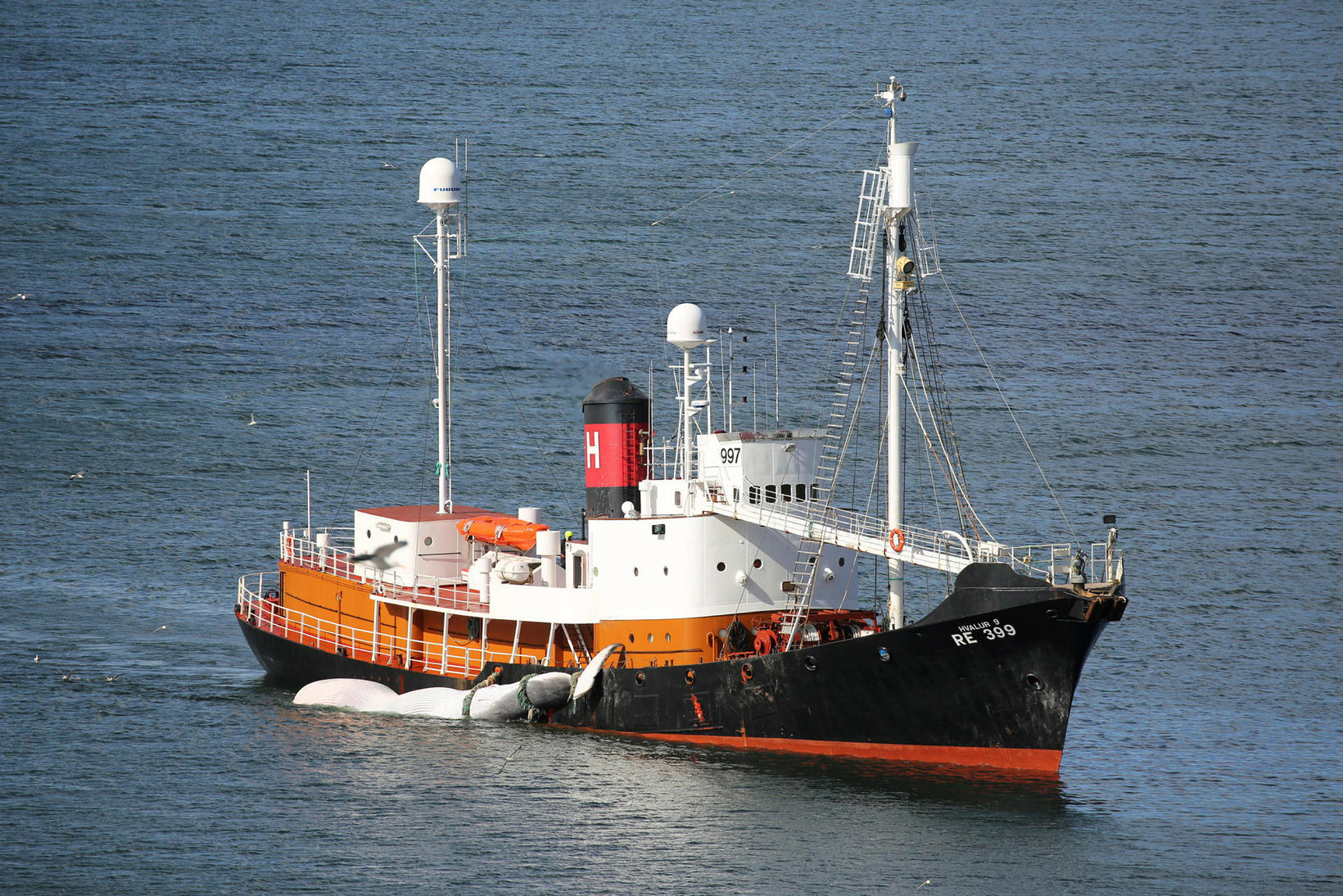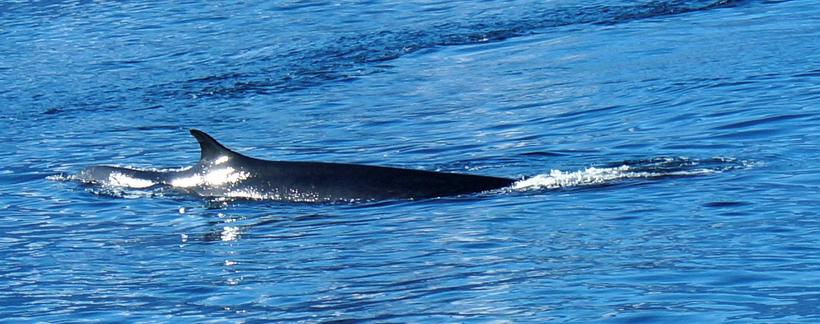Whaling reduces carbon dioxide emissions
The net emissions from each fin whale during its life span is about 1,770 tons of carbon dioxide. The average age of caught fin whales is 26 years, meaning that each animal emits 570 tons of carbon dioxide. From the age of 27 years onwards, annual emissions are estimated to be 1,200 tons, but by hunting fin whales it would prevent the release of such a quantity of carbon dioxide into the atmosphere. Each fin whale is estimated to emit a corresponding amount of carbon dioxide a year as more than 30 cars, that burn six liters per hundred kilometrs driven annually for 14 thousand miles.
In the last decade, the catch of long-distance hunting was about 150 animals per year. According to the above, the catch was thus preventing 180,000 tons of carbon dioxide from escaping into the atmosphere each year. This is reflected in a report by chemist Dr. Guðjón Atli Auðunsson, published on his website, www.gudjonatli.is .
The report shows that organic carbon concentration in the 40 ton fin whale is about nine tons, which corresponds to carbon bound in the trunk of 20 trees with a diameter of 40 cm and a height of 22 meters. Unlike vegetation that binds airborne carbon dioxide, carbon bound in fin whales is derived from its feeding on on marine organisms, i.e. carbon that is already bound. When long-term deposits of organic carbon in deep sediments are removed, carbon dioxide is permanently removed basically, and assuming that all organic carbon in the 40 ton fin whale can be deposited in that manner, which Auðunsson considers too generous an estimation, that amount would be about 18 millionths of a percent of the total product.
In fact, whale carcasses on the sea floor are by the largest part consumed by other species. So the long-term removal of carbon from whale carcasses on the sea floor is negligible, according to Auðunsson. According to him, the report estimates that the contribution of all whales of the Balaenopteridae family to the long-term deposition of organic carbon in sediments, amounts to about 0.12 % of the total organic carbon deposition today, but it was estimated to be 0.72 % before the industrial revolution.
High emissions
Fin whales convert organic carbon, which comes mainly from krill, into carbon dioxide by breathing. A fin whale weighing 40 tons emits about 56 tons of carbon dioxide a year. Compared with driving a car 14,000 km per year, that uses six gallons of fossil fuel per hundred km a year, this emission of one fin whale is equivalent to over 30 such cars per year, or the burn of 35 trees.
Fin whales, caught in Iceland, are 26 years old on average, according to available information on the age of animals caught in Iceland in the last decade. They have been breathing and releasing by blowing it into the atmosphere, what amounts to 1,200 tons of carbon dioxide in its lifetime, equivalent to the burning of 740 trees. If the fin whale is expected to reach 70 years of age on average, it will emit an additional 2,550 tons of carbon dioxide, which is 1,200 tons of carbon dioxide equivalent to the burning of nearly 1,600 trees, the report stated.
The report by dr. Auðundsson states that fin whales release nitrogen in their feces, but mainly in urine, but this element is said to be most likely to limit the growth of algae in Iceland. The release of carbon dioxide by respiration and the blowing of fin whales in Iceland corresponds to a burn rate of 15.3 tons of organic carbon, which is partly offset with the potential binding of organic carbon due to waste, which is 7.8 tons of organic carbon at most. Net emissions of fin whales in Iceland account for at least 7.5 tons of organic carbon per year or almost 28 tons of carbon dioxide annually. For one fin whale up to and including the age of 26, the total net emissions of such an animal is equivalent to at least 570 tons of carbon dioxide into the atmosphere of the total net emissions of such animal up to the age of 26 years, and from the age of 27 until the age of 70 years, that net emissions will be at least over 1,200 additional tons of carbon dioxide.
The contribution of waste materials to bind organic carbon during the span of 8 months over winter is not considered likely to be significant. If it had an effect and that nitrogen was a limiting factor in the growth of algae, then wintertime release of waste products from fin whales’ waste could reach a maximum of 4% of the total carbon binding that each year.
The total primary productivity in the Icelandic Economic Zone is approximately 122 million tons of carbon per year. The proportion of feces and urinary output of a single fin whale would contribute a maximum of six millionths of a percent of total primary productivity in the Icelandic Economic Zone.
For the entire fin whale stock in Iceland, a maximum of 0,26% organic carbon would be distributed in the economic zone due to increased primary productivity. According to the report of dr. Auðunsson, the effects of whales and fin whales, in particular, their effect on the earth’s carbon economy is minimal.
(Transl. Dóra Ósk Halldórsdóttir doraosk@mbl.is)



/frimg/1/38/77/1387784.jpg)





